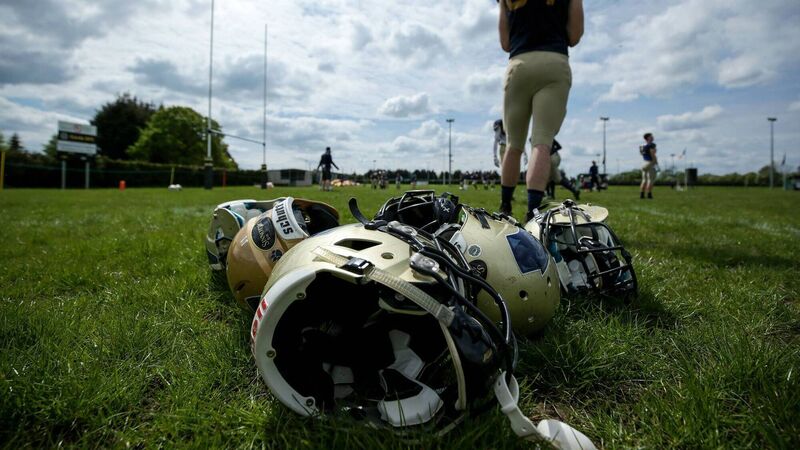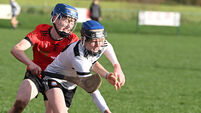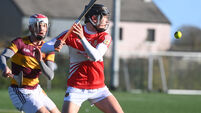Eimear Ryan: Protecting the brain must always be a priority over 'manliness'

It’s worth noting that NFL players are especially prone to CTE; while helmets prevent skull fractures, they do nothing to prevent concussions.
Earlier this month, the GWS Giants AFLW team — the Aussie Rules home of Cora Staunton and Bríd Stack — retired the #34 jersey at their end-of-season awards ceremony. The number belonged to Jacinda Barclay, known to her teammates as Barcs, who took her own life last October at the age of 29.
Like so many sportswomen who ply their trade in Aussie Rules, Barclay was a talented multi-disciplinarian. She started her sporting career in basketball and baseball, going on to represent Australia in the latter, appearing at five successive World Cups as her country’s pitcher.
After a stint spent abroad in the US, she was recruited by the Chicago Bliss, a women’s American football team that plays in the Legends Football League. Despite hating the uniform (the LFL was previously known as the Lingerie Football League, and requires its players to essentially play in bikinis with shoulder pads attached), she excelled in that sport, too, winning a championship as quarterback in her first year.
However, when she tried to organise her fellow players to campaign for better pay and conditions, she was expelled from the league.
What a relief it must have been when the AFLW was launched as a semi-pro league in 2017. Drafted by the Greater Western Sydney Giants for the inaugural season, she was finally a professional athlete in her own country after several years of playing elite sport. And while her AFLW salary of $23,000 meant that she still had to maintain other part-time work in order to get by, the validation of financial remuneration meant a lot to her — though she would often point out that if she were a man, she’d be earning ten times that amount.
Barclay’s death came as a shock to her family, friends, and many teammates. Known for being outspoken, charismatic, inclusive, and generally a force of nature, few knew that she was struggling with her mental health. Her family made the brave decision to donate her brain to the Australian Sports Brain Bank; until Barclay, they had no female donors who had played contact sports.
The researchers discovered substantial degradation in the white matter in Barclay’s brain — rare for someone as young and fit as she was. White matter changes have been linked to mental illness and an increased risk of suicide ideation.
What the family feared finding, but did not, was evidence of CTE — a progressive brain disease associated with repeated concussions, and often found in former NFL, AFL, and rugby players. It’s worth noting that NFL players are especially prone; while helmets prevent skull fractures, they do nothing to prevent concussions.
A stark insight into the effects of CTE can be found in the Netflix documentary series .
A former tight end with the New England Patriots, Hernandez was convicted of murdering Odin Lloyd, a friend and fellow football player, in 2015. After taking his own life in prison, the 27-year-old Hernandez was posthumously diagnosed with advanced CTE, which is known to affect memory, impulse control, and aggression. (In one of the documentary’s more interesting strands, the Patriots are taken to task for bringing Hernandez into the fold, despite multiple reports of violent incidents during his college career.)
While CTE does not excuse Hernandez’s crimes, it was no doubt a contributing factor.
At present, the research on CTE is mostly focused on men, although stories like Barclay’s continue to raise awareness for female athletes. US women’s national soccer team legends Abby Wambach and Megan Rapinoe have both pledged to donate their brains to concussion research. (Wambach may provide invaluable insight on the links between heading the ball and concussion, given that a large proportion of her 184 international goals came from headers.)
While the NFL might represent the extreme end of the scale in terms of CTE risk, awareness of the dangers of concussion is improving across all sports. Under-12 soccer players are no longer allowed to head the ball in training, and rugby players suspected of concussion are immediately substituted — a rule which has, sensibly, just now been implemented in the GAA for the 2021 National League.
It’s an important rule to enforce, given that the culture of the GAA — and of many team sports — is to play on through pain. Before the introduction of the blood substitution rule, we all had a bit of twinkle in our eye for the player who kept playing with blood on his jersey or trickling down his face. (Even better if it wasn’t his own, says you.)
Learning to push past discomfort, developing resilience, and subjugating your own feelings for the good of the team are all important lessons for a young player to learn. But at what point does it go too far, and a player becomes unable to admit that they’re hurt, that they’re disoriented, that they need help?
There has been much discussion in the past few weeks about over-zealous refereeing ruining hurling matches, and a lot of the time I share in the general frustration. It’s unfortunate to see players getting sent off for strong on-the-ball challenges and clumsy tackles, when in my opinion the red card should be reserved for dangerous and vindictive play.
I can’t help but feel that it’s a well-meaning over-correction on the part of the refs, and by extension the GAA higher-ups. In their desire to protect players and discourage cynical play, the dial has moved too far in the opposite direction, and matches are turning into — as Jackie Tyrrell put it — glorified free-taking contests.
Still, some of the arguments presented against the recent stop-start nature of the matches have been a bit dubious. The assertion that it’s a ‘manly’ game has been raised more than once (only men can be physical, aggressive, and competitive, you see). The fact that the players are in tremendous physical condition has also been cited, which is true, but they’ve also never been better placed to inflict damage on each other.
Being in peak physical condition and even wearing helmets hasn’t helped NFL players; lessons that we in the GAA should take to heart.










